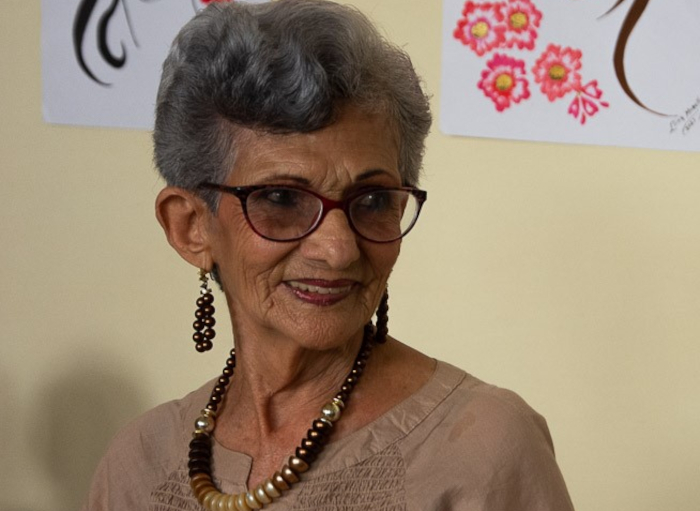CAMAGÜEY.— The news arrived the way good things often do: with a soft tremor recognized even before reading it fully. Artisan Luisa Aurora Morell Cabrera, 88, has been granted the Memoria Viva Award 2025 in the Personality category, bestowed by the Juan Marinello Cuban Institute for Cultural Research.
It was the only nomination sent from the province of Camagüey—a gesture that also honors the territory where she has woven, stitch by stitch, line by line, a legacy spanning more than six decades.
The jury—Raymalú Morales Mejías, Caridad Santos Gracia, and Rafael Lara González—selected her from among 68 candidates across the country, acknowledging the authenticity of her inherited craft, the strength of her community impact, and the enduring relevance of the knowledge she safeguards.
But those who know her understand that her story cannot be contained within the phrase “traditional popular craftsmanship.” Luisa Aurora is a woman who has moved through her time with the calm of someone who creates, teaches, and accompanies. Her utilitarian works, born from everyday ingenuity, embody the living memory of a tradition transmitted from generation to generation—along that invisible thread linking grandmothers to daughters, and daughters to granddaughters.
She arrived in Najasa in 1960 as a literacy teacher in the Rodolfo Parrado neighborhood, and from that moment on, she turned any space into a workshop, a school, or a creative refuge. She gathered rural women to embroider and sew, but also to talk, share, and recognize one another. The cultural history of the municipality would be entirely different without those gatherings that grew, over time, into larger homes: the House of Culture, the daycare center, the school, the maternity home, and the community projects that found in her a natural promoter of art and hope.
And even though the award dossier presents her mainly through craftsmanship, her life reaches far beyond. She is the author of Gente de circo (2001), among the first books published by Editorial Ácana; creator of social gatherings for the elderly where laughter and memory intertwine; and her biography includes her role as an underground fighter, a steadfast revolutionary, and a woman of deep convictions. All of that sustains her as well.
For more than 60 years, her steady, participatory work has strengthened local identity, fostering creativity, self-management, and the transmission of popular knowledge. Her workshops have served as meeting points for children, young people, adults, and elders; her teaching methods have enriched the training of cultural promoters and art instructors; and her partnerships with local institutions have supported the cultural transformation of public and community spaces.
Her son, Omar Francisco Carmenates Morell, specialist in Intangible Cultural Heritage at the Juan Nicolás Guillén Urra House of Culture in Najasa, authored the nomination “Luisa Aurora: the spring of Najasa’s handicrafts.” He wrote on social media:
“November will not go unnoticed either, as Najasa culture is once again recognized through one of its finest daughters: Luisa Morell Cabrera. (…) Once more, this devoted artist lifts to the highest place—through the work of her entire life—the best of her homeland’s identity. Congratulations!”
And indeed: Camagüey embraces one of its most beloved creators. At 88, Luisa Aurora remains a spring. Her hands have produced pieces, yes, but also paths. And this Memoria Viva Award 2025, earned from a small municipality, confirms that her work—like herself—is synonymous with perseverance, beauty, and roots.
Translated by Linet Acuña Quilez

